Date : 31/10/14
Topic : Protists (Algae & Fungi)
Activities
Notes
Name of microbes
Myxomycota and acrasiomycota

Oomycota

Zygomycota (zygote) is the fungi that involve production of conjugating gametangia, producing zygosporangia and zygospores. All of their hyphae are coenocytic, meaning they have no septa. An example of zygomycetesis Rhizopus stolonifer.
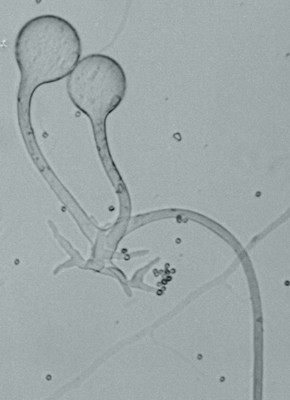
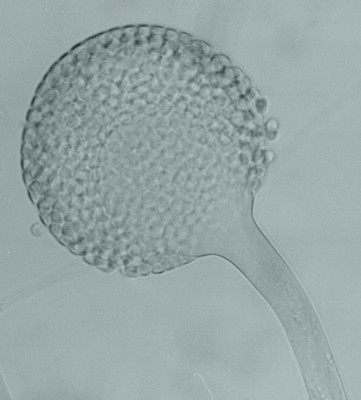
Glomeromycota were considered as zygomycetes years ago.
Ascomycota (sac) is also known as sac fungi.
Basidiomycota (club) includes rusts, shelf fungi, toadstools, and mushrooms. They can produce toxins which are poisonous or hallucinogenic.




Claviceps purpurea is an ergot fungus that grows on the ears of rye and related cereal and forage plants.


Blastomyces dermatitidis is a fungus which can cause blastomycosis, an invasive and serious fungal infection.

Histoplasma capsulatus is a fungus that cause histoplasmosis.
Cryptococcus neoformans is an encapsulated yeast that can live in both plants and animals.
Uredinomycetes (Pucciniomycetes) cause fungal rust in plants. They produce teliospore or teleutospore which is the thick-walled resting spore of some fungi (rusts and smuts).
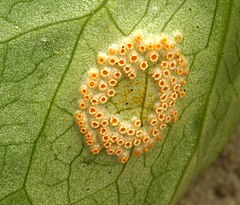
Ustilaginomycetes is the class of true smut fungi.


Microsporidia is the phylum of spore-forming unicellular parasites. It is an obligated intracellular fungal parasites that infect infects, fish, and humans.


Enterocytozoon bieneusi is a species of the order microsporida which infects the intestinal epithelial cells and may cause diarrhea and pneumonia.
Encephalitozoon cuniculi is a type of microsporidia which causes encephalitis (inflammation of brain) and nephritis (inflammation of kidneys).
Mycorrhizae includes Auricularia and truffles.
Auricularia auricula or wood ear is an edible fungus.

Chytridiomycota (chytrids) is a type of neocallimastigales, which can decompose cellulose and breakdown lignin deposits into smaller pieces. Neocallimastigales or neocallimastigomycota is anaerobic fungi found in digestive tracts of herbivores. They reproduce in the stomach through the use of zoospores that bears a kinetosome but lacks the nonflagellated centriole.
Sporothrix schenckii is a fungus found in soil and decomposing plant material.
Stachybotrys is a genus of molds or filamentous fungi. It is also known as "black mold" or "toxic black mold" that grow on water-damaged building materiaals with poor indoor air quality (sick building syndrome). Long-term exposure to the spores produced will cause irritation of eyes, mucous membranes of mouth, nose and throat, sneezing and chronic coughing. Allergy may occur with symptoms such as nausea, vomiting, bleeding in lungs and nose.

Coccidioides is a fungus found in soil which can cause Coccidioidomycosis (cocci, valley fever or California fever) when the spores are inhaled.
Pneumocystis jirovec is a tiny fungus that lives in the lungs of many people. It is parasitic and can cause fatal pneumocystis pneumonia in people affected with immunodeficiency disease. Signs of PCP are difficulty breathing, fever and dry cough.
Candida albicans is an opportunistic fungus that may cause fatigue, weight gain, join pain and gas. Candida albicans yeast is part of the gut flora. When overgrows (Candidiasis), it weakens intestinal wall, penetrating through into bloodstream and releasing toxic byproducts throughout the body.
Rhizopus stolonifer or black bread mold is found on bread surfaces, taking food and nutrients from bread and cause damage to the surface where it lives.

Aleuria aurantia or orange peel fungus is a widespread ascomycetes.
.jpg)
Lichen involves ascomycete fungi and basidiomycete which together form a stable thallus. It can be said to be made up of mycobiont (the fungus) and photobiont (the photosynthesizing organism).





Oomycota

Zygomycota (zygote) is the fungi that involve production of conjugating gametangia, producing zygosporangia and zygospores. All of their hyphae are coenocytic, meaning they have no septa. An example of zygomycetesis Rhizopus stolonifer.


Glomeromycota were considered as zygomycetes years ago.
Ascomycota (sac) is also known as sac fungi.
Basidiomycota (club) includes rusts, shelf fungi, toadstools, and mushrooms. They can produce toxins which are poisonous or hallucinogenic.
Claviceps purpurea is an ergot fungus that grows on the ears of rye and related cereal and forage plants.


Blastomyces dermatitidis is a fungus which can cause blastomycosis, an invasive and serious fungal infection.

Histoplasma capsulatus is a fungus that cause histoplasmosis.
Cryptococcus neoformans is an encapsulated yeast that can live in both plants and animals.

Uredinomycetes (Pucciniomycetes) cause fungal rust in plants. They produce teliospore or teleutospore which is the thick-walled resting spore of some fungi (rusts and smuts).

Ustilaginomycetes is the class of true smut fungi.
Microsporidia is the phylum of spore-forming unicellular parasites. It is an obligated intracellular fungal parasites that infect infects, fish, and humans.

Enterocytozoon bieneusi is a species of the order microsporida which infects the intestinal epithelial cells and may cause diarrhea and pneumonia.
Encephalitozoon cuniculi is a type of microsporidia which causes encephalitis (inflammation of brain) and nephritis (inflammation of kidneys).
Mycorrhizae includes Auricularia and truffles.
Auricularia auricula or wood ear is an edible fungus.
Sporothrix schenckii is a fungus found in soil and decomposing plant material.
Stachybotrys is a genus of molds or filamentous fungi. It is also known as "black mold" or "toxic black mold" that grow on water-damaged building materiaals with poor indoor air quality (sick building syndrome). Long-term exposure to the spores produced will cause irritation of eyes, mucous membranes of mouth, nose and throat, sneezing and chronic coughing. Allergy may occur with symptoms such as nausea, vomiting, bleeding in lungs and nose.

Coccidioides is a fungus found in soil which can cause Coccidioidomycosis (cocci, valley fever or California fever) when the spores are inhaled.
Pneumocystis jirovec is a tiny fungus that lives in the lungs of many people. It is parasitic and can cause fatal pneumocystis pneumonia in people affected with immunodeficiency disease. Signs of PCP are difficulty breathing, fever and dry cough.
Candida albicans is an opportunistic fungus that may cause fatigue, weight gain, join pain and gas. Candida albicans yeast is part of the gut flora. When overgrows (Candidiasis), it weakens intestinal wall, penetrating through into bloodstream and releasing toxic byproducts throughout the body.
Rhizopus stolonifer or black bread mold is found on bread surfaces, taking food and nutrients from bread and cause damage to the surface where it lives.

Aleuria aurantia or orange peel fungus is a widespread ascomycetes.
.jpg)
Lichen involves ascomycete fungi and basidiomycete which together form a stable thallus. It can be said to be made up of mycobiont (the fungus) and photobiont (the photosynthesizing organism).
Saccharomyces carlsbergensis is a yeast used to produce beer.
Brettanomyces is a non-spore forming genus of yeast. It is acidogenic and when grown on glucose ich media under aerobic conditions, it produces large amounts of acetic acid. Thus it is important to brewing and wine industries.
Yarrowia lipolytica is a type of yeast the can use unusual carbon sources such as hydrocarbon as food sources. It can degrade palm oil mill effluent, TNT and other hydrocarbons.
Anamorph is the asexual reproductive stage (morph), typically mold-like. fungi produce asexual spores only.
Teleomorph is the sexual reproductive stage (morph), typically a fruiting body.
Holomorph is the whole fungus, including anamorph and teleomorph.
Zygospore is the large spore of certain fungi and algae with thick wall. It is formed from the fusion of two similar gametes.
Ascospore is the spore produced in a sac like structure called ascus.
Basidiospore is the spore formed externally at the base of basidium.
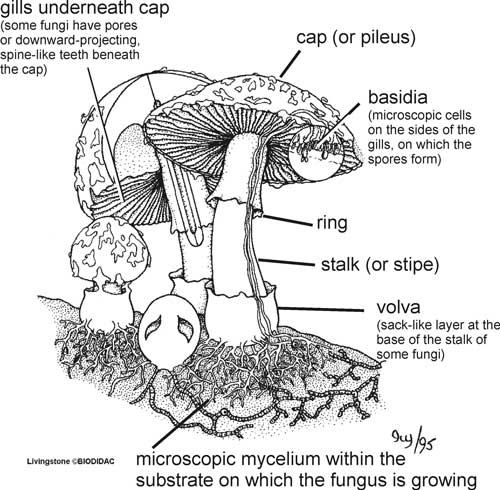
Homothallic is the possession of the resources within a single organism to reproduce sexually, meaning have male and female reproductive structures on the same thallus,
Heterothallic species have sexes that reside in different individual.

Rhizopus-Burkholderia symbiosis occurs where Burkholderia bacteria grows within Rhizopus and produce toxin that cause seedling blight in rice.
Ascocarp, or ascoma (plural: ascomata), is the fruiting body (sporocarp) of an ascomycete phylum fungus. It consists of very tightly interwoven hyphae and may contain millions of asci, each of which typically contains four to eight ascospores.The fruiting body of Ascomycetes is also known as truffle and is highly prized.
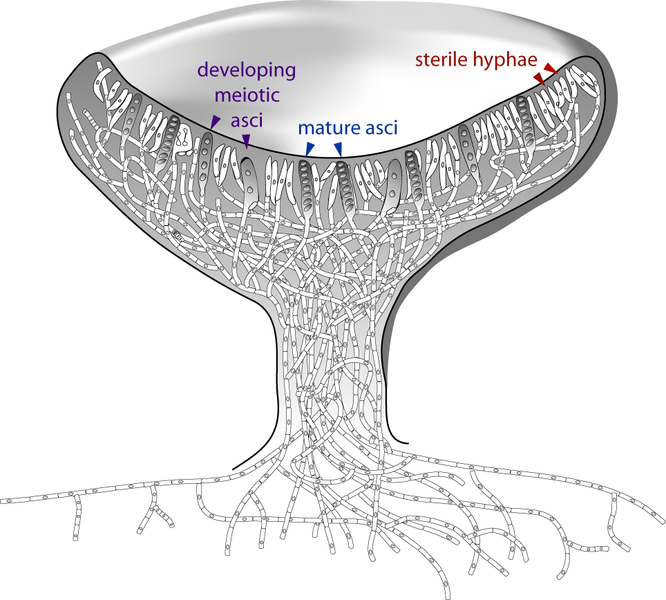
Sclerotium or sclerotia is a compact mass of hardeneed fungal mycelium containing food reserves.
Random facts
Muddiest point
1. Is truffle the fruiting body of ascomycetes or ascocarps or a type of mycorrhizae?
My own exploration
http://website.nbm-mnb.ca/mycologywebpages/NaturalHistoryOfFungi/Zygomycota.html
Reflection on this topic
The topic of fungi is quite interesting because some of the fungi have very special characteristics like the magic mushroom and other club fungi. Fungi are found everywhere and some can be seen with naked eyes, this make me feel that the world of fungi is even more interesting. If we've learnt their characteristics, we can identify the type of fungi and thus utilizing their properties.
No comments:
Post a Comment